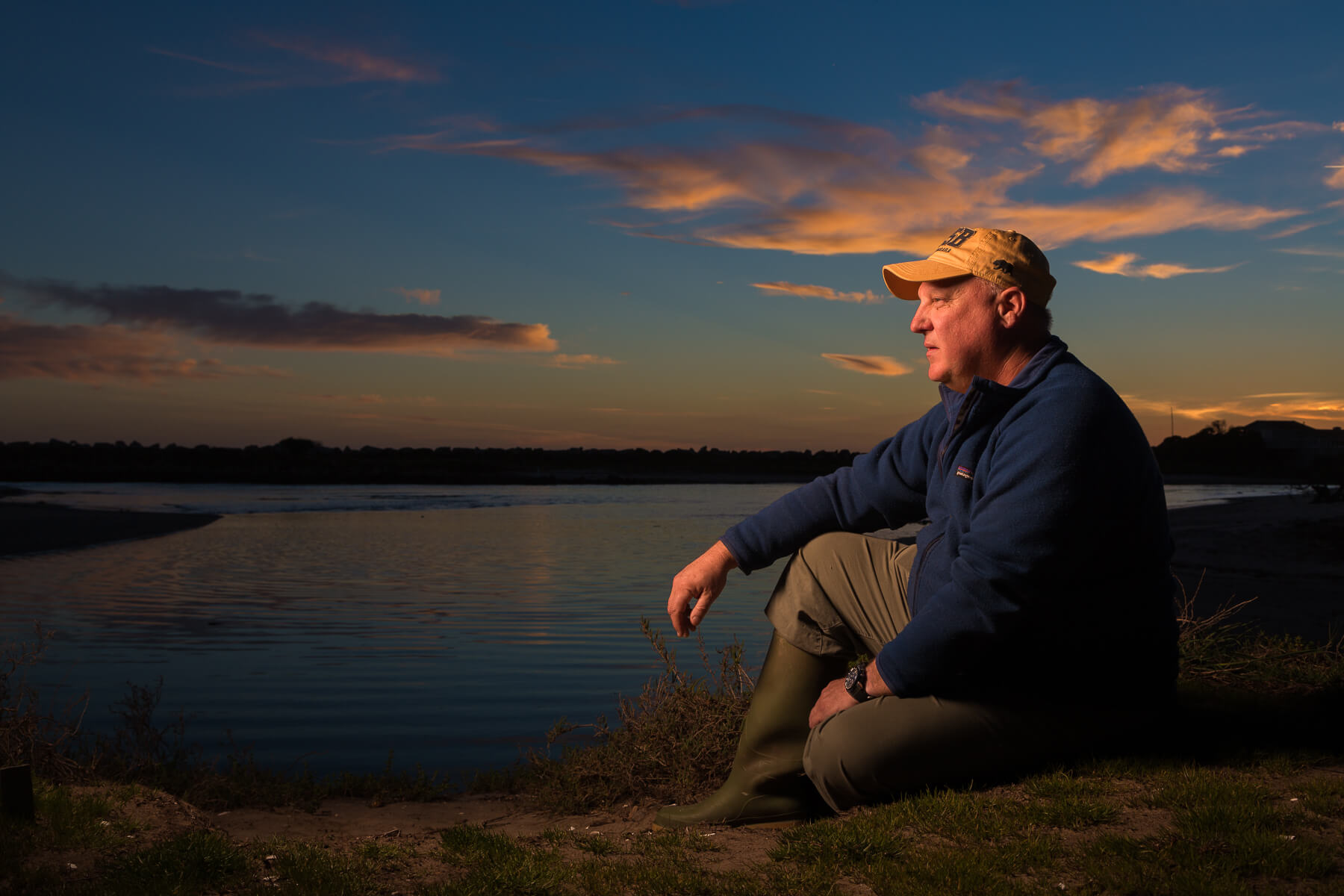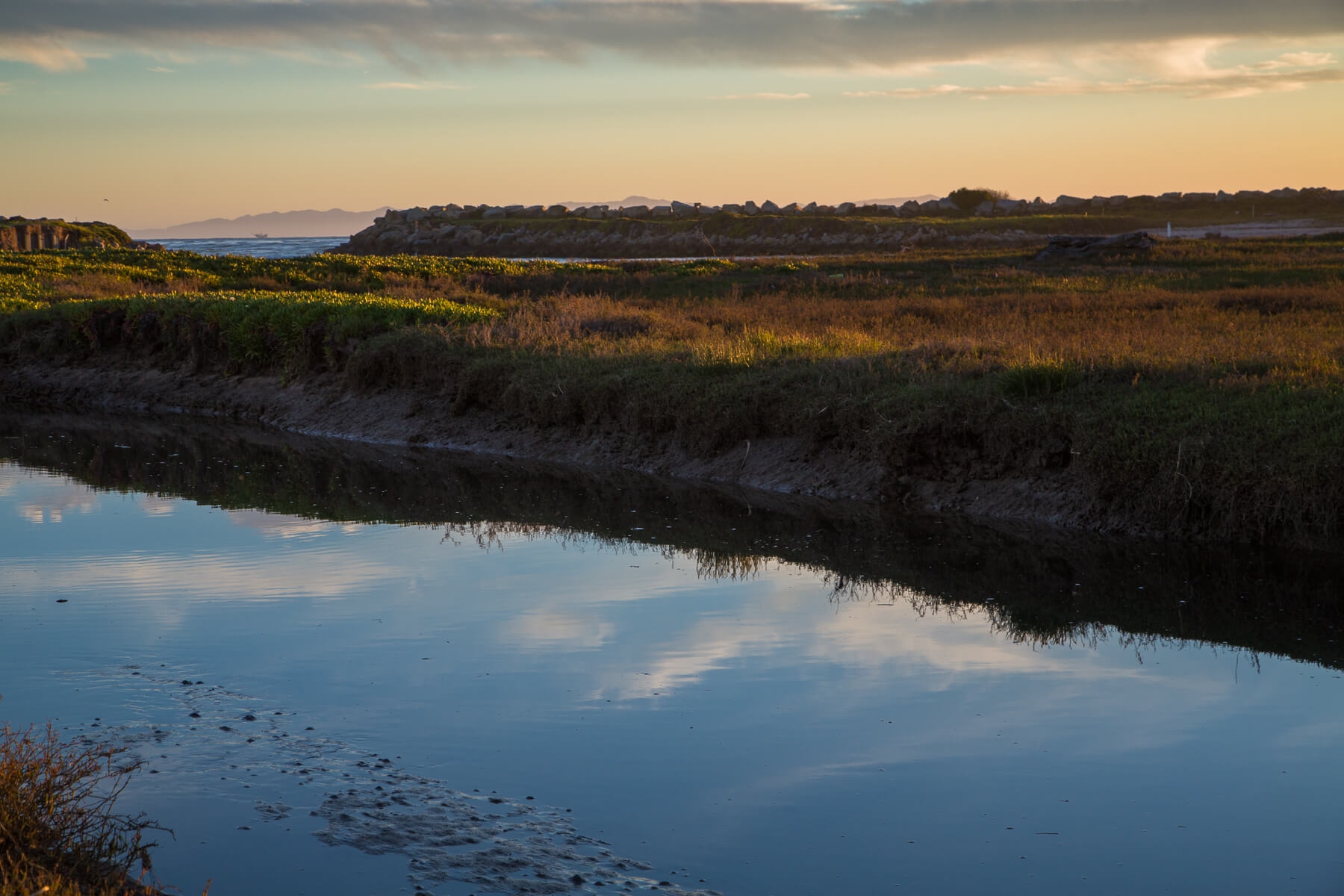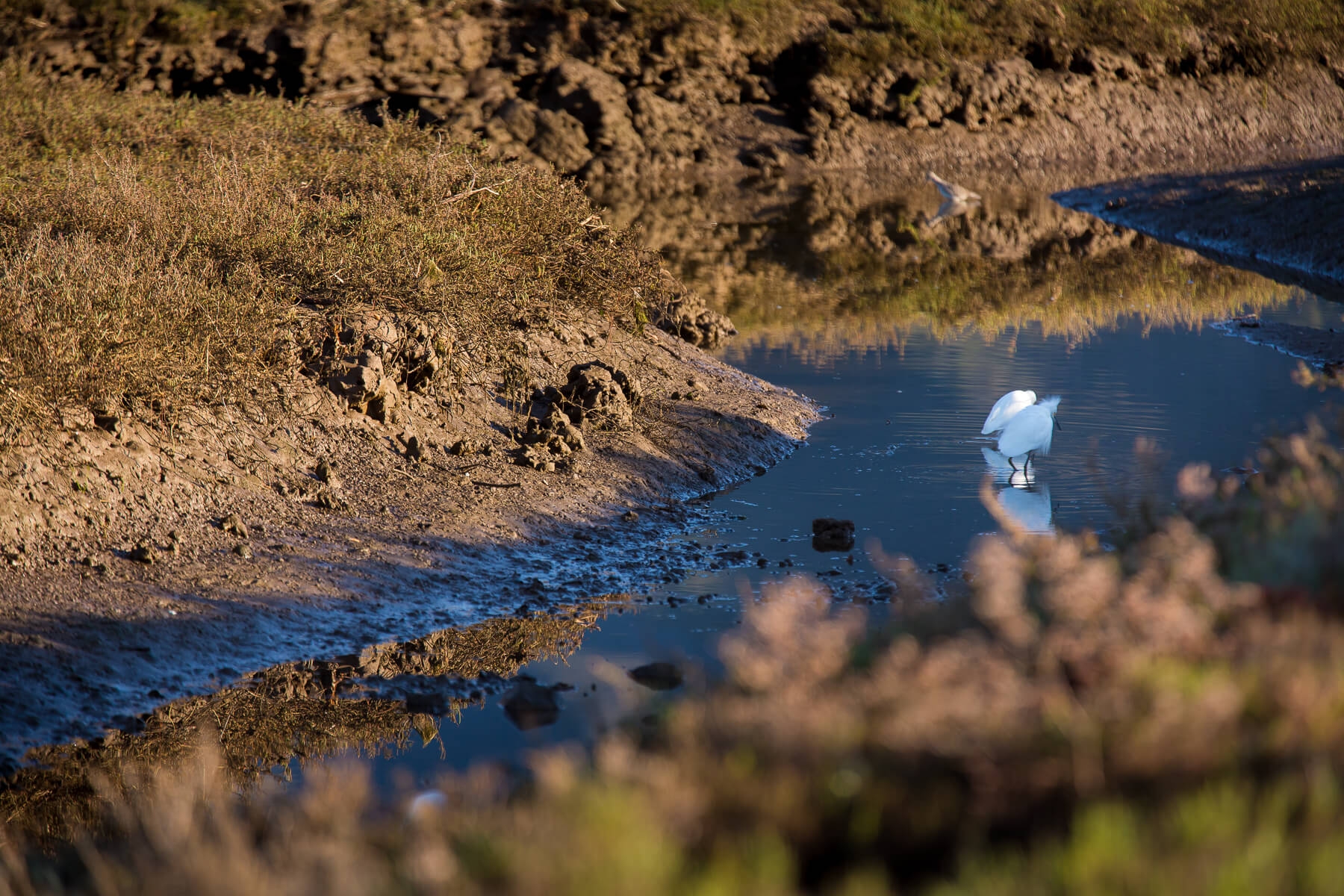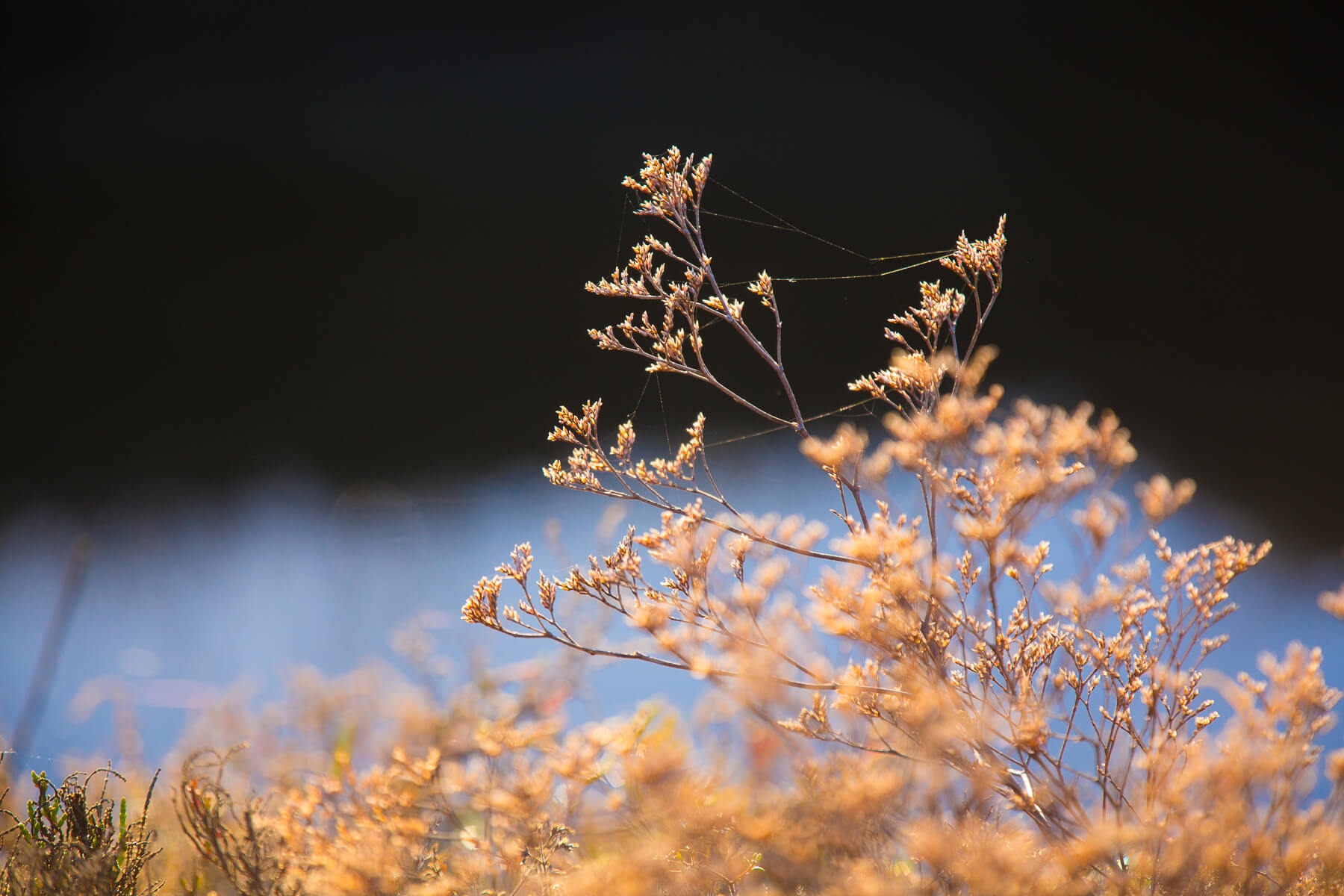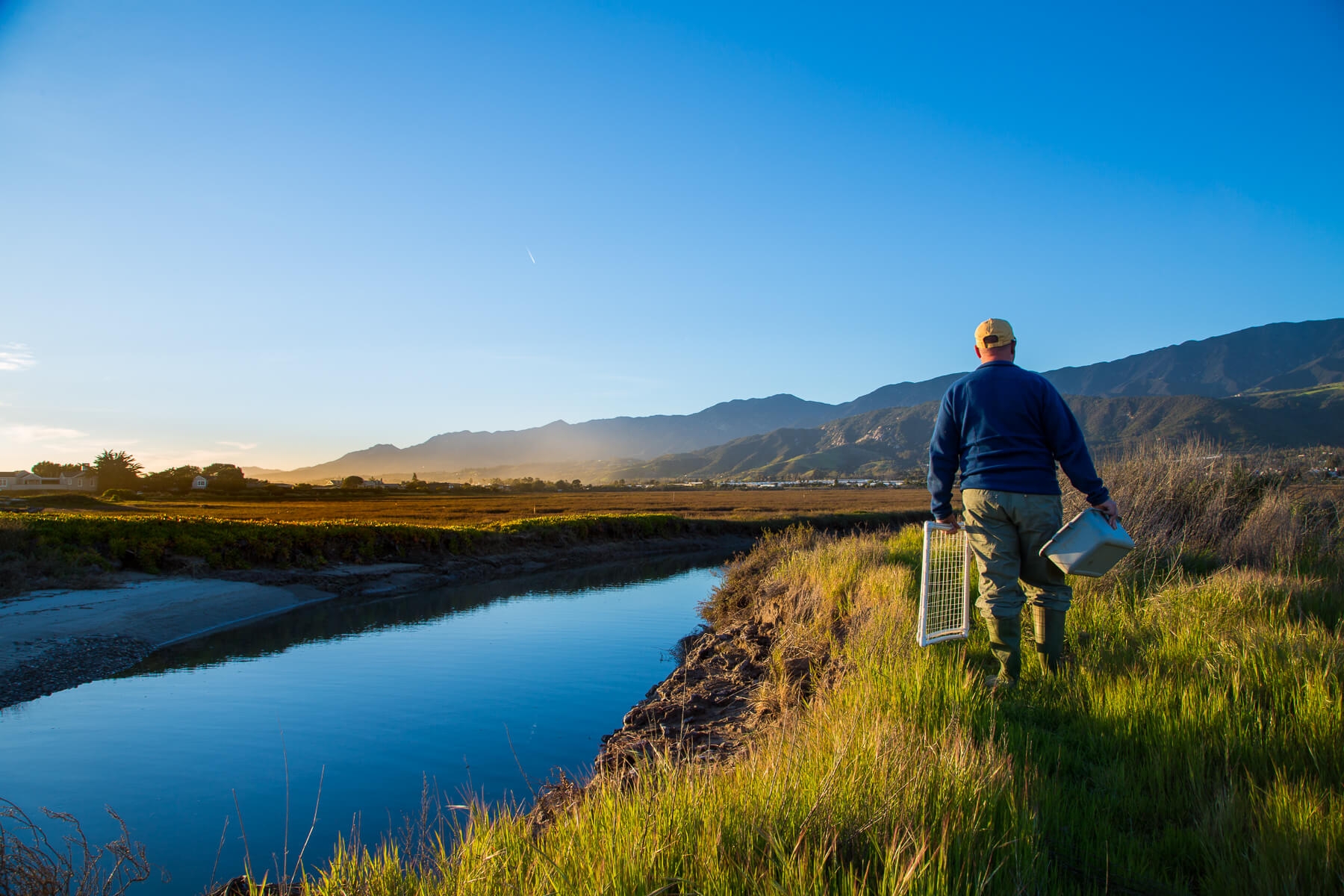A minute’s drive off the highway, buzz of cars still audible, a short, industrial block in Carpinteria dead-ends at a pair of train tracks across which Amtrak blazes multiple times each day. Two steps beyond, a chain link fence fronts an expanse of land mostly surrounded by offices, condos and houses.
Walking up on this flat, predominately brown and, to the untrained eye, otherwise nondescript place, you wouldn’t be the first to say, “Huh, not much to look at.” And you won’t be the last well-meaning naïf to whom Andrew Brooks simply says, “Look closer.”
There is always more than meets the eye at the Carpinteria Salt Marsh Reserve, which Brooks directs for the seven-site UC Santa Barbara Natural Reserve System (UCSB NRS). Like a butterfly inching out of its chrysalis, this swath of protected property reveals itself slowly, with every change in gaze bringing a new discovery.
“When you look out over the marsh, you don’t see a lot of tall, impressive trees, you don’t see any cliffs or mountains,” Brooks said. “It’s all very low, very close to the ground and most of the time it really doesn’t look like there is much happening at all. But you have to stop, be patient, take 10 minutes and look, and if you do, what you’ll see is a lot of activity in the marsh. You’ll see birds flying around and feeding in the channels, and fish swimming up and down. You can see crabs fighting with each other, little gladiator contests going on in the bottoms of the channels.
“You don’t have to be here too long — maybe 15 or 20 minutes — before you completely forget everything else exists,” Brooks added. “You get sucked in. Even though the railroad tracks are right there, the freeway is right there and there are houses all around, you pretty quickly filter that stuff out and all you see is the marsh. It’s just a really beautiful place to work.”
An oasis of nature
A biologist who did his doctoral work at UCSB — and, in fact, on the Carpinteria Salt Marsh Reserve he now oversees — Brooks, also a research scientist with the campus’s Marine Science Institute (MSI), has been managing the marsh since 2001. He doesn’t live on site as many reserve directors do. He’d have to pitch a tent. The property sits in the middle of a city and is devoid of any permanent structures.
But this place of understated ecological grandeur is a rarity in many more ways than that. A beach runs along its southern border, but the beach itself is not part of the reserve. And who needs it?
Picture this: Students visiting the marsh listen to a lecture along the banks of the estuarine channels — home to myriad coastal species — that snake through the property. Suddenly, bam! A hungry shark springs from the water into the air, trying to catch a crab. True story.
“I’m facing away from water, they’re all looking at me, taking notes, then they just stop,” recalled Brooks, who regularly gives tours and talks at the reserve to classes from UCSB, Santa Barbara City College and several other schools. “I hear a noise, and they’re all shouting and pointing. A four-foot leopard shark had come up into the channel behind me, chased a crab up onto the bank and was half out of the water wiggling around. Then it wiggles back into the water and swims away. Sometimes nature happens.”
And what a show it is. Sharks are just the beginning. In a region where more than 90 percent of wetlands have been degraded, filled or — as this marsh was once slated to be — developed into boat harbors, the reserve supports an impressive array of species.
All told, the estuary provides habitats for hundreds of species, many that are considered endangered or sensitive, such as salt marsh birds-beak and Belding’s savannah sparrow. More than 250 plant species, over 200 species of birds, mammals and other vertebrates, as well as over 100 types of invertebrates such as pygmy blue butterflies, fiddler crabs and the native Olympia oyster, have been recorded here. As have 35 types of fishes. Some, like the California stingray, use the channels for spawning, while others, including the California halibut, utilize the marsh as a nursery.
Brooks describes it as “an oasis of natural habitat in a larger urban landscape.”
“You have this 230-acre salt marsh surrounded by houses, schools, orchards, greenhouses, small businesses, railroad tracks and freeways,” he said. “As a result, the reserve provides critical natural habitat needed by a host of species trying to exist in an ever-changing, modern landscape dominated by ever-increasing coastal development. Taking into account the loss of over 90 percent of the coastal wetlands in southern California, remaining coastal marshes like this one act as increasingly important stepping stones used by species that routinely move up and down the west coast.”
“Being down here on the marsh by myself, just thinking about how nature works and how everything fits together, is one of the best parts of this job.”
Andrew Brooks
Reserve Director, Carpinteria Salt Marsh Reserve

